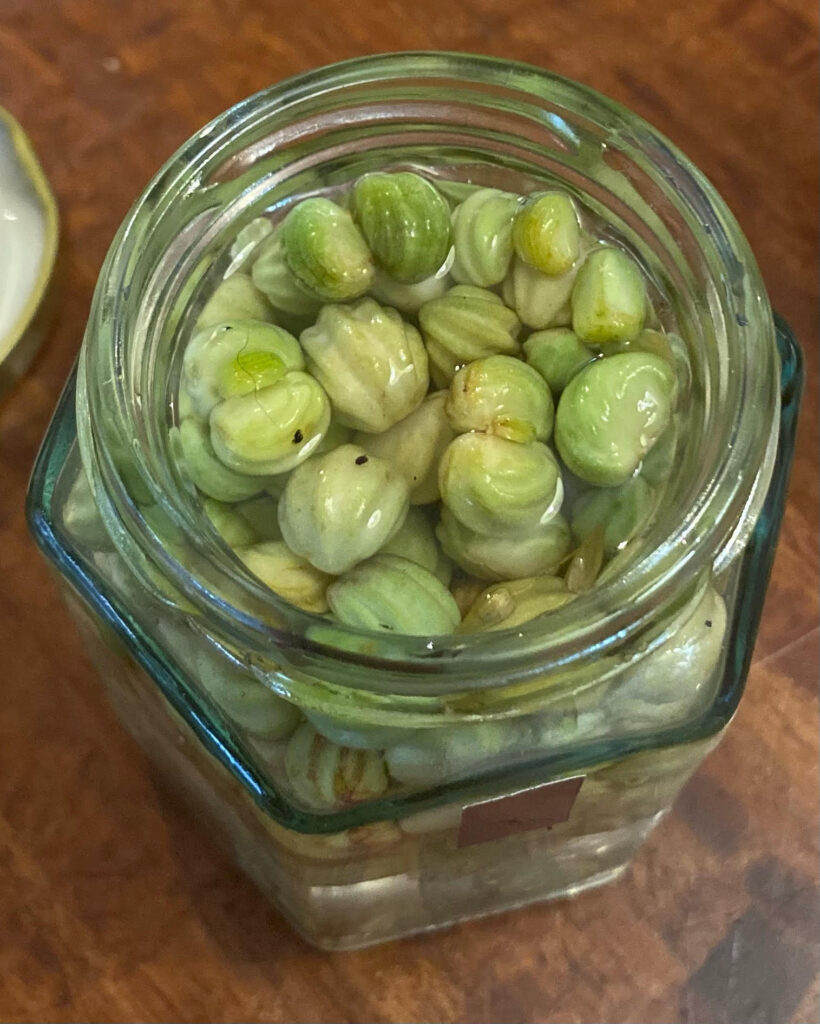By Araluen Hagan, from 14K Brewery
There is no vinegar in site when lacto-fermenting. This is because as the salt water ferments with the bacteria on the fruits or vegetables, it makes lactic acid, this preserves whatever is in the salty acidic brine. It is also what gives lacto-fermented products their distinctive flavour and makes for a crisper product if done correctly.

The change of seasons from winter to spring sees a changing of the guard in the garden. Winter nasturiums are dying off, leaving their seeds on withered stems. A favourite way to prepare and enjoy the bounty that the change of seasons brings, is to collect these seeds and soak them in a brine. The end result has been called poor mans’ capers, but I think that they are superior to capers, with a firmer texture and some crunch.
Make a brine using 11/2 tablespoons of sea salt or other pure salt (not iodised or with anti caking agents added) and 500ml filtered or boiled water. Pour it into a jar and add the nasturtium seeds. Make sure that the seeds are completely covered with the brine, leave about 2cm headspace. Leave the jar on the bench at room temperature, out of direct sunlight for 2-3 days. Shake the jar every time you walk past it and open the lid to release any gasses (the result of fermentation), do this for 2-3 days. Then put into the refrigerator and leave for a month before eating, this will slow the fermentation and will get better with age. These will keep in the fridge for years.
A similar process can be used to lacto-ferment garlic.
Carefully peel the garlic and soak in brine. The brine for garlic does not need to be as salty as the nasturtium brine – use 1 tsp salt per cup (250ml) of water. Simply ¾ fill a very clean jar with the peeled garlic cloves and then cover with the brine. Leave for a few days at room temperature to ferment, open lid daily to release any gas build up and when it is to your preferred flavour, put the lid on tight and refrigerate. The garlic is best eaten after a month if you can wait that long, and will keep for many months. Use the brine as well in dressings or as extra flavour in soups. The garlic loses its sharpness and becomes mellow with age.
